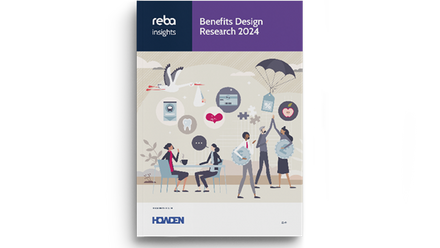Five things line managers should know about supporting employees who have chronic health conditions

The impact of long-term conditions or chronic diseases, such as cancer, diabetes or high blood pressure, on sufferers can be considerable – from persistent pain to debilitating fatigue.
While evidence suggests that work is good for employees’ physical and mental health, these individuals can experience difficulties performing their work-related tasks. Moreover, they can also experience feelings of sadness, shame and guilt.
From an employer perspective, the business fallout of chronic conditions can also be significant – from high rates of absence to low rates of productivity.
Here we outline five important steps that employers should consider to help support their employees.
1. Establish a clear policy
With an estimated 40% of the working age population set to have at least one long-term condition by 2030, Willis Towers Watson research has shown that many businesses have recognised the gravity of the problem.
According to our 2019 Benefits Trends Survey, one in five companies have revealed that they’re planning, or considering, the introduction of chronic disease management programmes over the next two years.
Business strategies and procedures for supporting employees with chronic conditions however, including their sickness policies, should be clearly defined.
This calls for formal policies that detail intervention procedures, how sick leave and return-to-work processes are managed, who employees can talk to about their needs, capabilities and limitations, and how information is shared along with the core responsibilities of all relevant stakeholders. This includes everyone from line managers and HR professionals to occupational health (OH) practitioners and risk managers.
In addition, flexible working opportunities should be outlined, as should the procedures for making appropriate workplace adjustments for a safe and healthy working environment for all, in accordance with the legal requirements of the Equality Act 2010.
Managing employees with chronic conditions can be a sensitive matter that requires understanding and good communication from both the employer and the employee. A formal policy will help ensure a best practice approach is always taken, helping to reinforce companies’ values and their reputations as employers of choice.
2. The keys to open communication
Employers have a duty to engage with employees that have chronic illnesses to ensure they fully understand the nature of their condition and how it may impact their work and their ability to do their job.
Moreover, only by doing so can they show empathy, understanding and build mutual trust. Discussions, however, should be conducted in a private and confidential manner, and employers should listen without making judgement and ask only what they need to know.
In cases where a chronic condition has led to long-term sickness absence, regular contact and consultation between an employer and employee is also an essential element of successful return to work plans – although it is important to strike the right balance.
If contact is made too often, some staff may feel they are being pressured to return to work too early. Infrequent communication, on the other hand, can cause others to feel undervalued or out of touch.
3. Flexible working arrangements
As part of an employer’s commitment to improving employees’ quality of life at work, flexible working arrangements can offer an effective means of alleviating the pressure on those suffering from chronic conditions.
This might mean changes to start or finish times, more regular breaks, time off for treatment or hospital appointments or home working – all designed to help staff function and conduct their working tasks more easily. Advancements in connected technologies, which can serve to further support flexible working, should be reviewed.
Such arrangements can allow employees to fulfil their obligations while fitting in ongoing treatment, or to simply allow them to work in a safe and comfortable environment. In turn, this can help employees better manage chronic pain or fatigue.
Flexible working arrangements can also prove particularly beneficial for members of staff who are transitioning back into working life after a period of long-term absence.
All employees with at least 26 weeks continuous service have the legal right to submit a formal flexible working request. Furthermore, all employees, regardless of their length of service or employment status, have the right to make an informal request for flexible working.
4. Workplace adjustments
The Equality Act 2010 requires employers to make “reasonable adjustments” in the workplace to prevent employees with a disability or progressive condition from being disadvantaged.
However, rather than trying to determine whether an employee is covered by the Act, a best practice approach from employers should see them looking to make the necessary adjustments to enable all workers to perform effectively.
The impact of a chronic condition on an employee’s workplace capabilities may not be obvious. This calls for consultations with the employees and a thorough assessment of their needs to determine what workplace adjustments, if any, are required.
Where necessary, expert advice should be sought when making this assessment from a GP, health care specialist or OH professional.
In some cases, redeployment may be needed. This would involve assessing the suitability of the new role, discussing any impact on contractual terms and conditions and offering the necessary training or support.
5. Benefits provision
A variety of treatments and support to help stabilise long-term conditions are available to employees, from benefits such as cash plans and private medical insurance (PMI).
The psychological wellbeing of employees affected by chronic conditions can be helped with counselling and advisory support.
Counselling offers confidential support from trained mental health professionals. This can offer more than just coping and management techniques, it can help affected employees to better understand the options and support that are available. Employee assistance programmes provide a valuable tool for employers in this area, offering access to experienced counsellors and a 24/7 telephone helpline.
Acute conditions have been the traditional focus for PMI schemes. Some medical insurers are looking to extend the provision for treatment of chronic medical conditions, thus offering employers a means of supporting employees with long-term conditions.
Over the coming years we can expect providers to give even greater consideration to healthcare designs and products that will address chronic conditions and that offer heightened levels of support for sufferers.
The author is Mike Blake, Willis Towers Watson’s wellbeing lead.
This article is provided by Willis Towers Watson.
Willis Towers Watson is sponsoring REBA’s Innovation Day 2019. Join us on 28 November in central London to future-proof your reward and benefits strategy.
In partnership with WTW
WTW is a leading global advisory, broking and solutions company.







